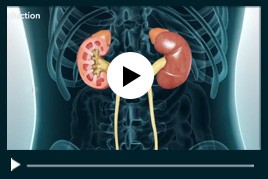Testes
The Testes and their Coverings -The testes are two glandular organs, which secrete the semen; they are suspended in the scrotum by the spermatic cords. The average testicular volume is 20 cc in healthy young men and decreases in elderly men. Normal longitudinal length of the testis is approximately 4.5 to 5.1 cm.
At an early period of foetal life the testes are contained in the abdominal cavity, behind the peritoneum. Before birth they descend to the inguinal canal, along which they pass with the spermatic cord, and, emerging at the subcutaneous inguinal ring, they descend into the scrotum, becoming invested in their course by coverings derived from the serous, muscular, and fibrous layers of the abdominal parietes, as well as by the scrotum.
With a slow connection, it may take about a minute to download this presentation.
Below are some some common conditions, diagnostics and treatments in relation to testes. Some of topics below are discussed elsewhere, click on the link to go to that section.
Orchitis
Orchitis is an inflammation of one or both of the testicles. The inflamation is often caused by bacterial infection of the testis. Mumps orchitis, a complication of the childhood viral disease, is the most typical example of complication in childhood; however, some men who get mumps with swelling of the parotid gland (the saliva-producing glands in the cheeks) will experience an inflammation in one or sometimes both testicles.
Symptoms
- Pain in the scrotum, which will be more severe on walking
- The scrotum may become hot and swollen
- Increased body temperature
- The symptoms usually last for about a week
Causes and Risks
Orchitis may be caused by numerous bacterial and viral organisms. The most common viral cause is mumps. Approximately 15 to 25% of men who have mumps after puberty will develop orchitis during the course of the illness. Brucellosis is a rare disease in which orchitis develops in 2 to 20% of men with the disease.
Orchitis may also occur in conjunction with infections of the prostate or epididymis and, like those conditions, may occur as a manifestation of sexually-transmitted diseases such as gonorrhea or chlamydia. The incidence of sexually-transmitted orchitis or epididymitis is higher in men 15 to 25 years old.
Risk factors for non-sexually transmitted orchitis include:
- Inadequate immunization against mumps
- Older age (age greater than 45)
- Recurrent urinary tract infections
- Abnormalities of the urinary tract
Risk factors for sexually transmitted orchitis include:
- Multiple sexual partners
- Other high risk sexual behaviors.
- History of a sexual partner with a previously diagnosed STD
- Personal history of gonorrhea or other STD
What is the treatment for orchitis?
- A week's bed rest.
- Pain on walking can be eased using a suspensory bandage, which lifts the sore, swollen scrotum.
- Painkillers can be used, but antibiotics are not recommended.
- Those affected sustain permanent damage to their testicles, which may lead to decreased fertility in a minority of men.
An adult man whose child develops mumps should seek medical advice. Gammaglobulin injection may decrease the risk of developing the infection in the testicles. However, the effectiveness of this treatment is still not proven. Today, all children are offered a vaccination against mumps when they are 12 to 15 months old.
Epididymitis
Inflammation of the epididymis is much more common than orchitis. Epididymitis usually arises as a complication of an urinary system infection, and is usually caused by a bacteria. In the past, gonorrhoea was the most common cause of epididymitis. Nowadays, most cases are probably caused by chlamydia. Nevertheless, in many cases no identifiable organism is found.
Symptoms may occur quite suddenly and can include:
- A rise in body temperature accompanied by chills.
- A sore swelling of the epididymis.
- Hot, reddish scrotal skin.
- Occasionally, pain in the stomach accompanied by a sick feeling and vomiting.
Symptoms of a urinary tract irritation may also be present. These include burning pain when passing urine and an increased need to urinate. The inflammation can involve the testis, which is very painful and may be described as acute epididymo-orchitis.
Consult your doctor immediately if you have symptoms relating to any urinary infections.

 Menu
Menu




